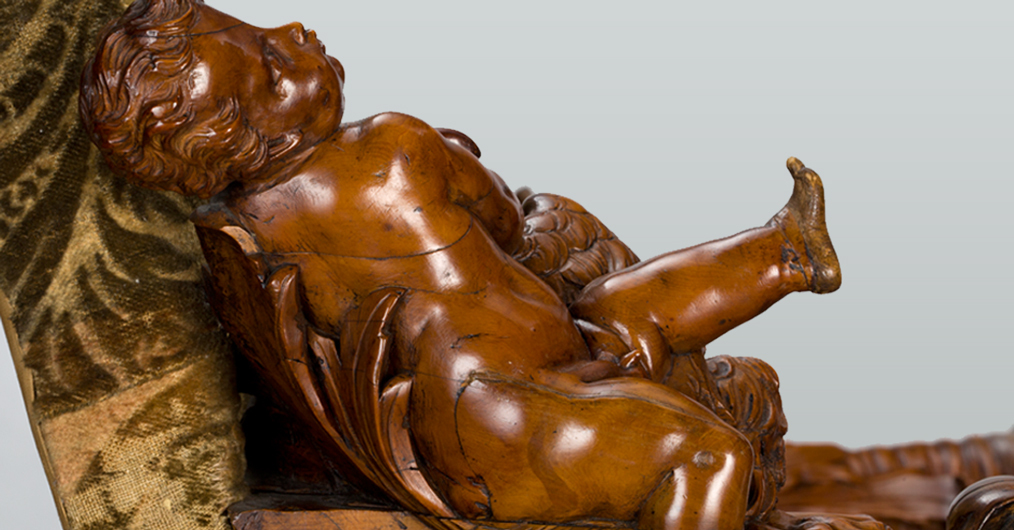Wawel tickets official site: bilety.wawel.krakow.pl
Furniture
A collection of furniture created in Europe from the end of the Middle Ages to the beginning of the 20th century.
The collection of furniture comprises almost 1500 pieces, created in Europe during six centuries; from the 15th c to the 20th c. The core of the collection is furniture from the 16th and 17th centuries, collected with a view to its exhibition in the royal chambers, intended to remind everybody of the great times of the Wawel residence during the reign of the Jagiellon and the Vasa dynasties. The furniture was obtained through purchase from private individuals and from antique shops in Poland and abroad, mainly in Italy (e.g. in Venice) and Vienna, and also from donations, e.g. from Leon Piniński, Jerzy Mycielski or Antonina and Dawid Abrahamowicz.
What is particularly interesting is a collection of 16th-c. Italian furniture, with chests resembling in shape antique sarcophagi, which are sculptured, decorated with moulding, gilt, polychromy and inlay; and richly decorated chest benches and decorative tables.
French mannerist furniture from the 2nd half and the end of the 16th c. matches the Italian furniture in terms of the quality of workmanship and richness of decoration. The collection includes mainly tables and two-part tallboys created by cabinet makers from Ile-de-France and Burgundy.
There is also furniture from the leading German or Dutch centres, e.g. a collection of portable boxes from the end of the 16th c. and the 1st half of the 17th c., made in Augsburg, Cologne or Antwerp, with rich inlay from multi-hued varieties of wood or incrustation of ivory and ebony. A monumental cabinet with tortoiseshell covering is also included in this collection, decorated additionally with drawings presenting Roman temples, created in 1674 by the Gandava draughtsman, Livinus Cruyl, commissioned by the Wrocław bishop, cardinal Frederik von Hessen Darmstadt.
The furniture from later centuries is quite well represented, especially that from the 17th and 18th centuries, including a collection of cabinets, e.g. Dutch kussenkast display cabinets, decorated with ebony, and used for keeping china; German ‘facade’ and ‘undulating’ cabinets, created most probably in Augsburg and Frankfurt; or richly ornamented Gdańsk cabinets.
The latter are also represented by tables, a linen press, chairs and a two-part tallboy with convex and concave profile on its façade.
The collection of pieces from the 18th c. is dominated by French furniture. These are mostly decorative pieces – desks, tables, small escritoires, made in the workshops of Criaerd, Avril, Dubois or Topin; chest of drawers are the most numerous exhibits, mostly by famous Parisian cabinet makers, such as Leleu, Stumpff, Franc, Lardin, Ellaume or Revault.
The collection of Wawel furniture also contains 19th-c. pieces; examples of classicism, empire, Biedermeier, Luis Felipe, Napoleon III, and also secession and modernism.
What is particularly interesting is a collection of 16th-c. Italian furniture, with chests resembling in shape antique sarcophagi, which are sculptured, decorated with moulding, gilt, polychromy and inlay; and richly decorated chest benches and decorative tables.
French mannerist furniture from the 2nd half and the end of the 16th c. matches the Italian furniture in terms of the quality of workmanship and richness of decoration. The collection includes mainly tables and two-part tallboys created by cabinet makers from Ile-de-France and Burgundy.
There is also furniture from the leading German or Dutch centres, e.g. a collection of portable boxes from the end of the 16th c. and the 1st half of the 17th c., made in Augsburg, Cologne or Antwerp, with rich inlay from multi-hued varieties of wood or incrustation of ivory and ebony. A monumental cabinet with tortoiseshell covering is also included in this collection, decorated additionally with drawings presenting Roman temples, created in 1674 by the Gandava draughtsman, Livinus Cruyl, commissioned by the Wrocław bishop, cardinal Frederik von Hessen Darmstadt.
The furniture from later centuries is quite well represented, especially that from the 17th and 18th centuries, including a collection of cabinets, e.g. Dutch kussenkast display cabinets, decorated with ebony, and used for keeping china; German ‘facade’ and ‘undulating’ cabinets, created most probably in Augsburg and Frankfurt; or richly ornamented Gdańsk cabinets.
The latter are also represented by tables, a linen press, chairs and a two-part tallboy with convex and concave profile on its façade.
The collection of pieces from the 18th c. is dominated by French furniture. These are mostly decorative pieces – desks, tables, small escritoires, made in the workshops of Criaerd, Avril, Dubois or Topin; chest of drawers are the most numerous exhibits, mostly by famous Parisian cabinet makers, such as Leleu, Stumpff, Franc, Lardin, Ellaume or Revault.
The collection of Wawel furniture also contains 19th-c. pieces; examples of classicism, empire, Biedermeier, Luis Felipe, Napoleon III, and also secession and modernism.
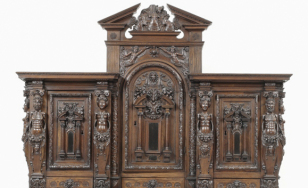 Two-tiered cupboard. Workshop of Hugues Sambin, France, Burgundy, 4th quarter of the 16th c.
Two-tiered cupboard. Workshop of Hugues Sambin, France, Burgundy, 4th quarter of the 16th c.
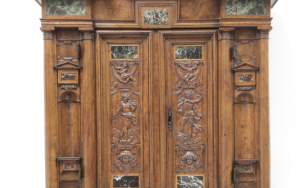 Two-tiered cupboard (armoire à deux corps). France, Île-de-France, end of the 16th c.
Two-tiered cupboard (armoire à deux corps). France, Île-de-France, end of the 16th c.
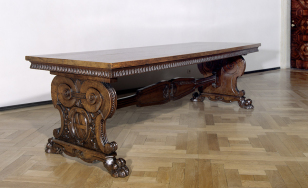 Table. Italy, Siena, mid-16th c.
Table. Italy, Siena, mid-16th c.
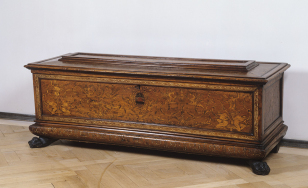 Chest. Italy, Bologna, mid-16th c.
Chest. Italy, Bologna, mid-16th c.
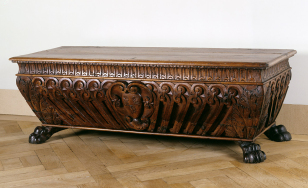 Sarcophagus-shaped chest. Italy, Florence, 1st half of the 16th c.
Sarcophagus-shaped chest. Italy, Florence, 1st half of the 16th c.
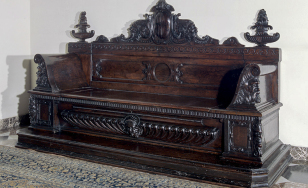 "Cassapanca" (bench-chest). Italy, Florence, 2nd half of the 16th c.
"Cassapanca" (bench-chest). Italy, Florence, 2nd half of the 16th c.
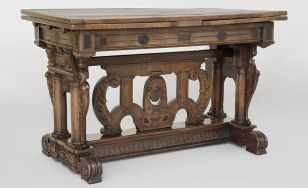 Table. France, Île-de-France, 2nd half of the 16th c.
Table. France, Île-de-France, 2nd half of the 16th c.
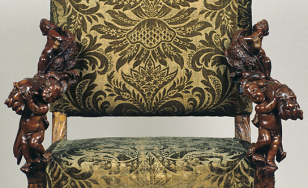 Armchair. Italy, Venice, circle of Andrea Brustolon (1662–1732), ca. 1700
Armchair. Italy, Venice, circle of Andrea Brustolon (1662–1732), ca. 1700
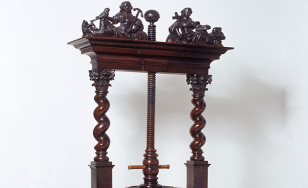 Linen press. Poland, Gdańsk, ca. 1700
Linen press. Poland, Gdańsk, ca. 1700
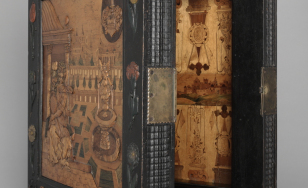 Chess and backgammon game board. Cheb, 1680s, attributed to Johann Kar Haberstumpf (1656–1742)
Chess and backgammon game board. Cheb, 1680s, attributed to Johann Kar Haberstumpf (1656–1742)
LOG IN
REGISTRATION
